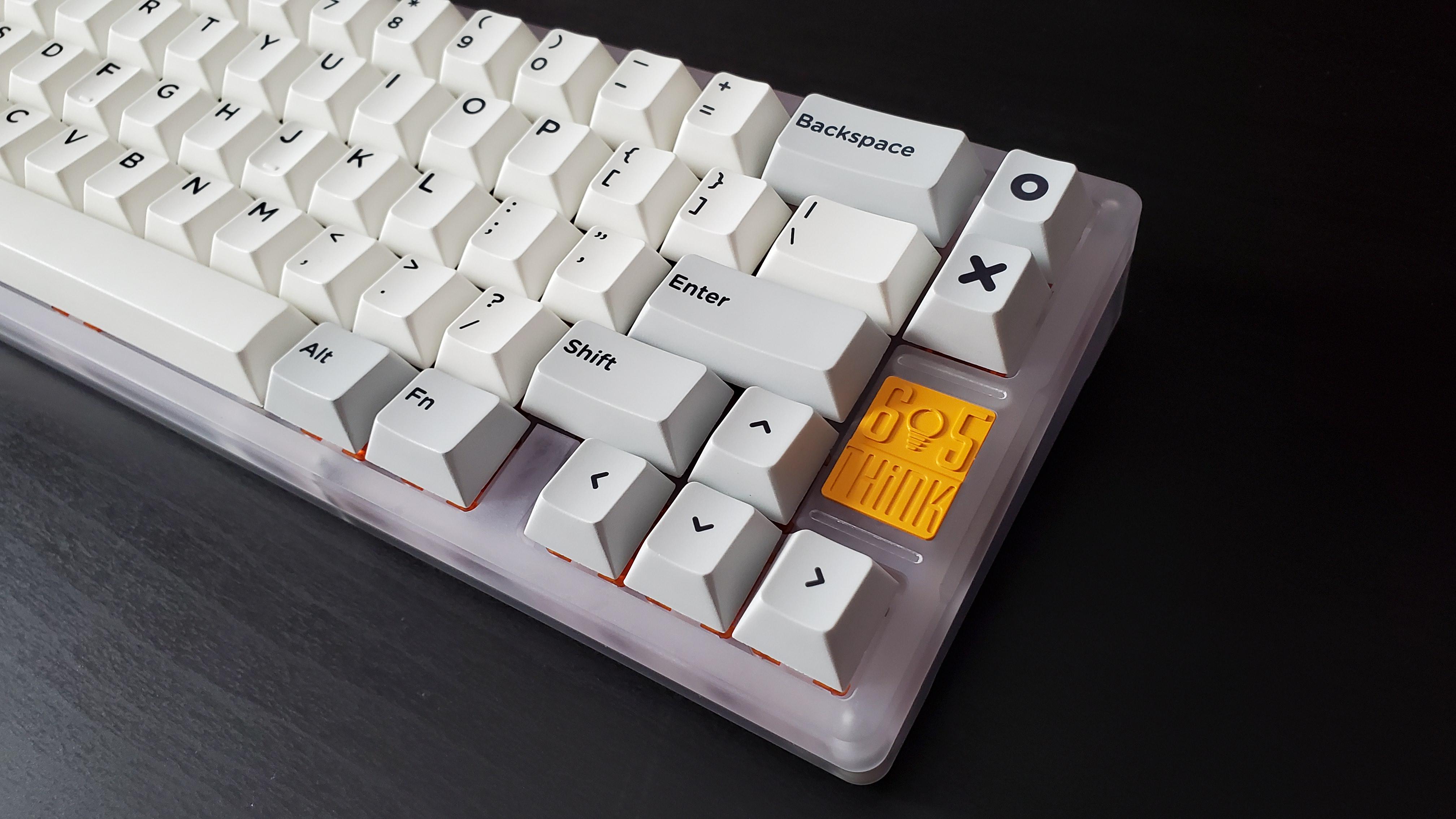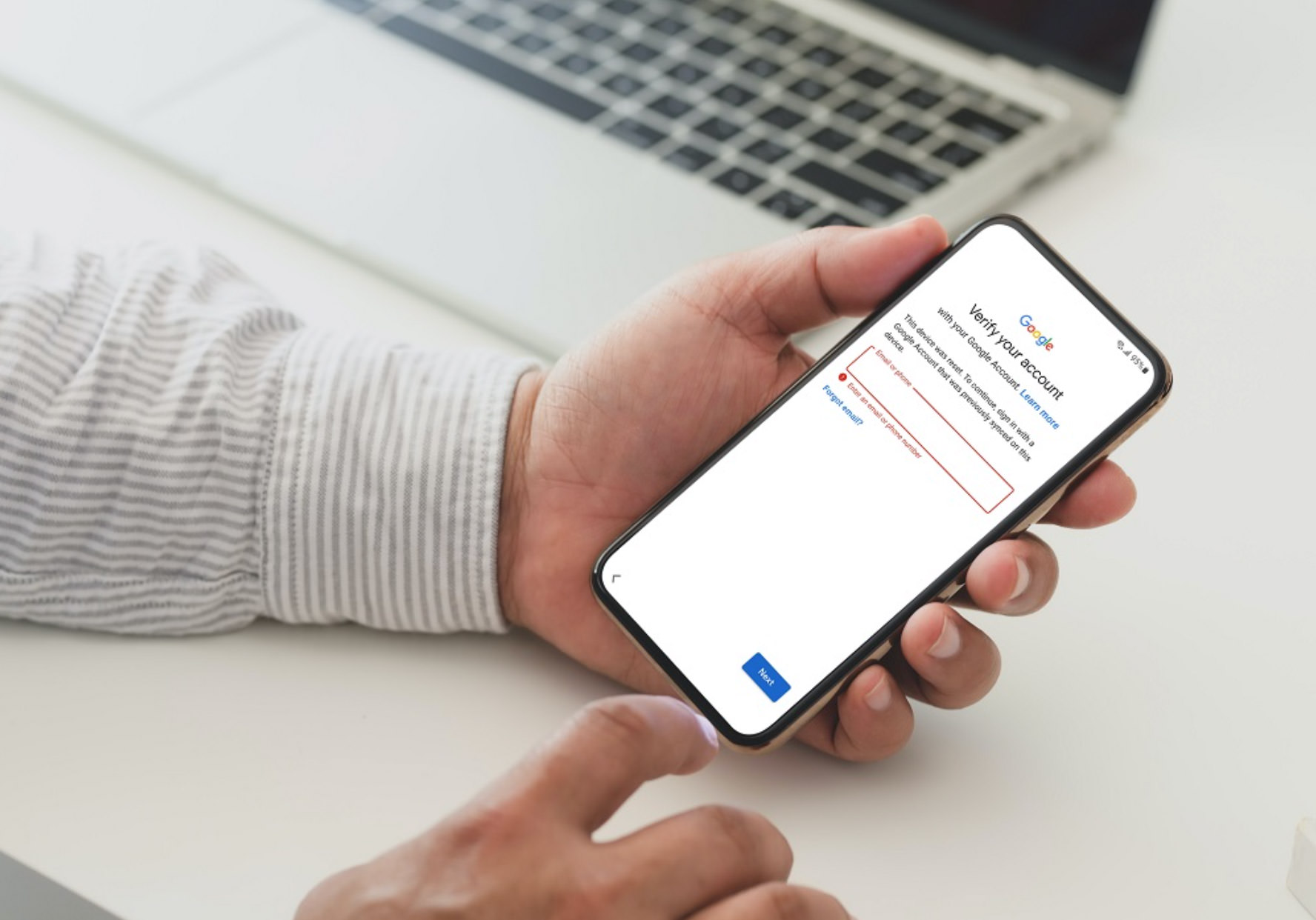Introduction
Keyboards are an essential tool for anyone who uses a computer or mobile device. They provide a means of inputting text and commands, making them a vital component of our daily digital lives. Whether you’re typing up an email, writing a report, or navigating through your favorite websites, understanding the different parts of a keyboard is crucial to maximizing your efficiency and productivity.
In this article, we will explore the various components of a keyboard, diving into the functionality and purpose behind each key. From the familiar alphabet and numeric keys to the more specialized function and control keys, we will take a closer look at the anatomy of a keyboard and how it enables us to interact with our devices.
By gaining a better understanding of the layout and function of a keyboard, you can unlock advanced techniques and shortcuts that can significantly boost your typing speed and overall user experience. So, let’s dive in and unravel the mysteries behind these fascinating input devices!
The Anatomy of a Keyboard
A keyboard is typically composed of several main sections that work together to provide a seamless input experience. Let’s explore each of these sections and their respective features:
- Function Keys
- Alphanumeric Keys
- Arrow Keys
- Numeric Keypad
- Control Keys
- Modifier Keys
- Special Character Keys
The arrangement and layout of these sections can vary slightly depending on the type of keyboard – whether it’s a traditional desktop keyboard or a laptop keyboard. However, the basic functionality and purpose of each section remain consistent.
The layout and arrangement of keys on a keyboard is often referred to as the “QWERTY” layout, named after the first six letters on the top-left corner of the alphanumeric keys. This layout is designed for optimal typing efficiency and has been in use since the early days of typewriters.
Now, let’s take a closer look at each section of a keyboard and explore their specific functions and features in more detail.
The Function Keys
Located at the top of the keyboard, above the alphanumeric keys, are the function keys. These keys are labeled F1 through F12 and serve a variety of functions depending on the software or operating system you’re using. While the exact purpose of each function key can vary, here are some common uses:
- F1: Often used as a help key. Pressing F1 within an application or program will usually open a help menu or provide context-specific information.
- F2: Frequently used for file renaming. Pressing F2 when a file is selected allows you to quickly change its name.
- F3: Often used to open a search function. Pressing F3 within a web browser or file explorer will typically activate a search bar.
- F4: Often used in combination with the Alt key to close open applications or windows. Pressing Alt+F4 will typically close the active window.
- F5: Commonly used to refresh a webpage or reload content in various applications.
- F6: Frequently used for navigating between different sections or panes within an application.
- F7: Often used for spell-checking or grammar checking in word processing software.
- F8: Commonly used for accessing the Safe Mode boot menu in Windows operating systems.
- F9: Often used as a shortcut to open email applications or perform specific actions within those applications.
- F10: Frequently used to activate menu options in various software programs.
- F11: Often used to toggle between full-screen and windowed mode in web browsers and media players.
- F12: Commonly used as a shortcut to open the Save As dialog box in many applications.
These are just a few examples of how the function keys can be utilized. The specific functionality of each key can vary depending on the software or operating system you’re using. It’s worth noting that some keyboards may also include additional function keys or customize the default functions of these keys.
Understanding the functionality of the function keys can help you navigate and interact more efficiently with various software and applications, ultimately enhancing your productivity.
The Alphanumeric Keys
The alphanumeric keys make up the majority of a keyboard and are the keys we use most frequently when typing. These keys include the letters of the alphabet, numbers, punctuation marks, and special characters.
On a standard QWERTY keyboard, the alphanumeric keys are arranged in a specific pattern. The row at the top consists of the letters Q to P, followed by the letters A to L in the middle row, and the letters Z to M in the bottom row. The number keys are located above the letter keys, usually accessed by holding down the Shift key.
Typically, the alphanumeric keys serve the purpose of inputting text and characters into documents, emails, and other applications. They allow us to communicate, create content, and navigate through different interfaces.
When you press a key, the corresponding character is displayed on the screen. For example, when you press the letter “A” key, the letter “A” appears in the text field or document where your cursor is located.
These keys also have additional functions when combined with modifier keys such as Shift, Control, and Alt. The Shift key, for instance, allows you to input uppercase letters by holding it down while pressing the desired letter key. The Control key, often abbreviated as “Ctrl,” is used in combination with other keys to perform certain actions, such as copy and paste.
The alphanumeric keys are the backbone of typing, and mastering their placement and usage is key to becoming a proficient typist. With practice, you can develop muscle memory and become faster and more accurate in your typing skills.
By understanding the arrangement and purpose of the alphanumeric keys, you can improve your typing speed and efficiency, making your everyday tasks involving text input a breeze.
The Arrow Keys
Located in an inverted “T” formation on the lower right corner of the keyboard are the arrow keys. These four directional keys include the up arrow, down arrow, left arrow, and right arrow. They are used primarily for navigation purposes, allowing you to move the cursor or selection in different directions.
The arrow keys are particularly useful when editing documents, navigating through web pages or spreadsheets, and playing certain video games that require precise movement. Instead of clicking with a mouse or trackpad, the arrow keys provide a more precise and controlled way to move within a document or interface.
When pressed, the up and down arrow keys scroll vertically, allowing you to move through text or scroll through web pages. Similarly, the left and right arrow keys scroll horizontally, allowing you to navigate through lines of text or navigate through the content of a document or application.
In addition to their basic navigation functionality, the arrow keys can also perform various other tasks depending on the software or application you are using. For example, in text editors or word processors, the Shift key can be pressed simultaneously with an arrow key to select text in a given direction. This makes it easy to highlight and format specific sections of text.
Furthermore, in certain programs or games, the arrow keys can be customized to perform specific actions or move objects within the application. They often provide an alternative to using the WASD keys on gaming keyboards, offering a comfortable and intuitive way to control character movement.
The arrow keys offer a straightforward and reliable method of navigation, especially when precision and accuracy are required. Whether you’re editing a document, exploring a web page, or playing games, these keys can enhance your user experience and make navigating through content a smooth and seamless process.
The Numeric Keypad
Located on the right side of a standard keyboard is the numeric keypad. It consists of a grid of numbers, mathematical symbols, and additional function keys. The numeric keypad is a convenient tool for quickly entering numerical data, performing calculations, and navigating through spreadsheets.
The layout of the numeric keypad mimics that of a standard calculator. The numbers from 0 to 9 are arranged in a grid, with additional keys for mathematical operations such as addition, subtraction, multiplication, and division. The “Enter” key is also included to confirm input or execute commands.
The numeric keypad is particularly useful for tasks that involve large amounts of numerical input, such as data entry or accounting. It allows you to enter numbers swiftly and efficiently, saving you time and reducing the strain on your fingers.
In addition to numerical input, the numeric keypad can be used with modifier keys to perform more advanced functions. For example, holding down the “Shift” key while pressing a number key on the numeric keypad can result in special characters being inputted, such as the currency symbol for a specific country.
It’s important to note that not all keyboards come equipped with a separate numeric keypad. Some keyboards, especially those found on laptops or compact keyboards, may have a condensed or integrated version of the numeric keypad located within the alphanumeric keys. In these cases, you’ll typically need to activate a specific key combination or modifier to access the numeric keypad functions.
Whether you’re crunching numbers, entering data, or navigating spreadsheets, the numeric keypad provides a convenient and efficient way to handle numerical input. Its layout and functionality are designed to streamline tasks that involve numbers, making it a valuable tool for anyone working with numerical data on a regular basis.
The Control Keys
The control keys on a keyboard are a set of keys that provide additional functionality and control over various aspects of the computer or software you’re using. These keys are typically located in the bottom left or bottom right corner of the keyboard, near the space bar.
One of the most prominent control keys is the “Control” key, often abbreviated as “Ctrl.” When used in combination with other keys, the Ctrl key allows you to perform specific actions or shortcuts within applications. Common functions associated with the Ctrl key include copying (Ctrl+C), pasting (Ctrl+V), cutting (Ctrl+X), and undoing an action (Ctrl+Z).
Another frequently used control key is the “Alt” key, short for “Alternate.” The Alt key is primarily used in combination with other keys to access shortcut menus, activate hotkeys, or perform special functions within specific programs. For example, pressing Alt+F4 will typically close the active window or application.
The “Windows” key, often displayed with the Windows logo, is another significant control key found on many keyboards. It is typically located between the Ctrl and Alt keys on the left side of the keyboard. Pressing the Windows key opens the Start menu or the Windows taskbar, providing quick access to various system functions and applications.
Other control keys may include the “Print Screen” key, which captures screenshots of the current screen or active window, and the “Scroll Lock” key, which modifies the behavior of the arrow keys and the scrolling of content on the screen.
The control keys are designed to provide quick access to commonly-used functions, shortcuts, and system commands. Mastering the use of these keys can significantly improve your productivity and efficiency while navigating through applications and performing specific actions.
It’s important to familiarize yourself with the control keys specific to your operating system and the applications you use frequently. By doing so, you can take full advantage of the power and convenience they offer, making your computing experience smoother and more streamlined.
The Modifier Keys
Modifier keys on a keyboard are specific keys that, when pressed in combination with other keys, modify or enhance their functionality. These keys include Shift, Control (Ctrl), Alt, and the Windows key (on Windows-based systems). Modifier keys expand the range of functions you can perform with just a single key press.
The Shift key is one of the most commonly used modifier keys. It allows you to switch between uppercase and lowercase letters, and provides access to additional characters printed on the same key with a Shift symbol. For example, pressing Shift+”1″ results in entering the exclamation mark “!” instead of the number “1”.
The Control key (Ctrl), located on both sides of the keyboard, is often used in combination with other keys to perform shortcuts and execute specific commands. For example, pressing Ctrl+”S” saves a document in many applications, while Ctrl+”C” copies selected text.
The Alt key (short for Alternate) is another modifier key that is frequently used in combination with other keys to access special characters, activate shortcuts, or modify the behavior of certain functions. For instance, pressing Alt+”Tab” allows you to quickly switch between open applications or windows.
On Windows-based systems, the Windows key, identified by the Windows logo, is a powerful modifier key. Pressing the Windows key alone opens the Start menu, while combining it with other keys can activate various system functions or shortcuts. For example, Windows+”D” shows the desktop, and Windows+”L” locks the computer.
These modifier keys serve as shortcuts and facilitate efficient navigation and control over your computer. By memorizing and utilizing these combinations, you can save time and effort in executing common actions, accessing functions, and navigating between different tasks and applications.
It’s worth noting that different operating systems and software applications may have specific combinations and functionalities associated with the modifier keys. Therefore, it’s beneficial to familiarize yourself with the specific shortcuts relevant to your system and frequently used software.
Mastering the use of modifier keys empowers you to work more efficiently, perform actions with fewer steps, and navigate your digital environment with greater ease.
The Special Character Keys
Special character keys on a keyboard provide quick access to various symbols and characters that are not typically found on the alphanumeric keys. These keys allow you to enter special characters, punctuation marks, accents, and other symbols commonly used in different languages and communication contexts.
Special character keys can include the following:
- Comma (,) and Period (.) keys, used for punctuation purposes.
- Question Mark (?) and Exclamation Mark (!) keys, used for indicating questions or strong emphasis.
- Quotation Marks (“”) and Apostrophe (‘) keys, used for indicating quotes or possessive forms.
- Brackets ([ ]) and Braces ({ }) keys, used for grouping or enclosing content.
- Slash (/) and Backslash (\) keys, used for file paths and division purposes.
- Tilde (~) and Grave Accent (`) keys, used in programming, mathematics, and language-specific characters.
- At (@) and Pound/Hash (#) keys, commonly used in email addresses, social media tags, and coding.
- Pipe (|) and Ampersand (&) keys, used in programming and computer-based tasks.
These are just a few examples of special character keys, and their specific placement may vary slightly depending on the keyboard layout and regional settings.
In addition to these basic special character keys, keyboards may also include dedicated keys for currency symbols, international characters, and other commonly used symbols. These keys are especially useful when working with multilingual content or needing quick access to frequently used characters.
To access the special characters on these keys, you can typically press them alone or in combination with the Shift or Alt keys. The precise combination may differ depending on your keyboard layout and operating system.
Using the special character keys allows for more precise and accurate communication, especially when writing in different languages or in situations that require the use of specific symbols and punctuation. Their inclusion on the keyboard ensures that you have easy access to a wide range of characters to enhance your written expression.
The Escape Key
The Escape key, often labeled as “Esc” on the keyboard, serves as a versatile and essential key for various functions. It is usually located in the top-left corner of the keyboard, either on its own or as part of a cluster of function keys.
The primary purpose of the Escape key is to provide a quick way to cancel or escape from a current operation or function. It serves as a way to interrupt or halt a process that may be running, such as a command or operation within an application or program.
In many software applications and operating systems, pressing the Escape key can instantly close dialog boxes, cancel ongoing tasks, or exit full-screen modes. It provides an immediate way to navigate back to a previous state or to stop a command or action that is in progress. For example, pressing the Escape key while a file is being downloaded may cancel the download process.
Additionally, in certain software programs or games, the Escape key can be used to access menus or pause the game, allowing you to adjust settings, save progress, or quit the application altogether.
Beyond its cancellation and interruption functions, the Escape key is also commonly used as a keyboard shortcut for specific actions. Many text editors and integrated development environments (IDEs) use the Escape key in combination with other keys to trigger special commands, such as search and replace functionality or to exit the command mode in some text editors.
Furthermore, the Escape key is also utilized during the startup process of some computers to interrupt the normal boot sequence and access advanced start-up options or the system’s BIOS settings.
Overall, the Escape key serves as a versatile tool for canceling operations, closing windows, accessing menus, and performing various other functions within software applications and operating systems. Its presence on the keyboard ensures that you have a convenient way to escape or interrupt processes, providing a sense of control and flexibility in your digital interactions.
The Delete Key
The Delete key, often labeled as “Delete” or “Del” on the keyboard, is a powerful key that allows you to delete characters, words, or selected objects. It is typically located in the top-right corner of the main keyboard area, either on its own or as part of a cluster of keys.
The primary function of the Delete key is to remove characters to the right of the cursor or selection. When you press the Delete key, the character or object immediately to the right of the cursor will be deleted. This makes it convenient for editing text or deleting unwanted files or folders.
In addition to deleting individual characters, the Delete key also plays a crucial role in deleting selected text or objects. By highlighting a section of text or selecting an object and then pressing the Delete key, you can remove the entire selection in one swift action. This eliminates the need to individually delete each character or object.
Furthermore, the Delete key can also be used with the Shift key to perform a different function known as a “forward delete.” In this case, pressing Shift+Delete will delete the character or object to the left of the cursor or selection.
The Delete key is particularly useful in various scenarios. For example, when you’re editing a document and want to remove a portion of the text or when you’re cleaning up your computer storage and need to delete unnecessary files. Additionally, it is valuable when working with spreadsheets, databases, or coding, allowing you to efficiently remove or clear data.
It’s worth noting that some keyboards, especially those on laptops or compact devices, may have a smaller or alternate placement for the Delete key. In such cases, you may need to press additional keys or use specific key combinations to achieve the same functionality.
By utilizing the Delete key, you can effortlessly remove characters, words, or selected objects, saving you time and effort in your daily tasks involving text editing and file management.</p
The Enter Key
The Enter key, also known as the Return key, is a fundamental key on the keyboard that serves various functions depending on the context in which it is used. It is typically located in the bottom-right corner of the main keyboard area, below the Backspace and above the Shift keys.
One of the primary uses of the Enter key is to create a new line or paragraph in a text document, chat interface, or messaging application. When you press the Enter key, the cursor moves to the next line, allowing you to start a new paragraph or input a new command. This simple yet essential function facilitates clear formatting and readability in written communication.
In addition to creating new lines, the Enter key is often used to confirm and execute commands within various software applications. For example, in word processors, pressing Enter often finalizes the text input or confirms a change. In dialog boxes or forms, it allows you to submit the entered information or proceed to the next step.
Moreover, the Enter key has specific functions in different software programs. In spreadsheet applications, it moves the cursor to the cell below or confirms the entry in the current cell, allowing for efficient navigation and data input. In web browsers, pressing Enter within the address bar directs you to the specified webpage. In file explorers, pressing Enter opens the selected file or folder for easy access.
Besides its practical uses, the Enter key also plays a significant role in user interface interactions. It serves as a way to confirm choices and navigate between different options in menus or dialog boxes. For example, when selecting an option in a dropdown menu, pressing Enter can submit the choice without requiring additional mouse clicks.
It’s important to note that the functionality of the Enter key can vary slightly depending on the operating system and software application being used. However, its consistent purpose as a key for line breaks and executing commands remains prevalent across different platforms.
Overall, the Enter key is a vital component of the keyboard, enabling efficient text input, command execution, and user interface interactions. Its versatility and widespread use make it a fundamental tool in our daily digital interactions.
The Backspace Key
The Backspace key, often labeled with a left-pointing arrow or a retro-style arrow pointing to the left, is a crucial key on the keyboard that aids in correcting and erasing text. It is typically located in the top-right corner of the main keyboard area, near the Enter and Delete keys.
The primary function of the Backspace key is to delete characters that are to the left of the cursor or selection. When pressed, it removes the character immediately preceding the cursor, allowing you to backtrack and correct errors in your text. This makes it a vital tool for editing and refining written content.
In addition to removing individual characters, the Backspace key can also be used to delete selected text or objects. By highlighting a section of text or selecting an object and then pressing Backspace, you can delete the entire selection in one swift action, providing a quicker method to erase unwanted content.
The Backspace key is especially useful when entering text in various applications and environments. It allows you to quickly correct typing mistakes, delete unnecessary characters, or modify content without having to retype everything. It is an invaluable tool for ensuring accuracy and clarity in your written communication.
Furthermore, the Backspace key can also be used in combination with the Shift key to perform a different function known as a “forward delete.” When you hold down Shift and press Backspace, it deletes the character or object to the right of the cursor, giving you flexibility in deleting content in either direction.
While the primary function of the Backspace key is erasing characters, its functionality can vary slightly depending on the software application or operating system being used. Some applications may utilize the Backspace key for additional purposes, such as navigating back within a web browser or file explorer.
Overall, the Backspace key is a valuable tool for editing, refining, and correcting text. Its position on the keyboard ensures quick access to deleting characters and selected content, providing efficiency and accuracy during the writing and editing process.
The Caps Lock Key
The Caps Lock key is a toggle key on the keyboard that, when pressed, locks the keyboard into uppercase mode. It is typically located in the leftmost corner of the main keyboard area, near the Shift key.
When Caps Lock is activated, all letters typed will appear in uppercase, regardless of holding down the Shift key. This feature is especially useful when you need to type in all capital letters for headings, acronyms, or emphasizing certain words.
The Caps Lock key is designed to provide convenience and efficiency for users who frequently need to enter uppercase text. By toggling the Caps Lock on, you can avoid the need to continuously hold down the Shift key as you type, reducing strain on your fingers and improving your typing speed.
Although the most common use of the Caps Lock key is to toggle between uppercase and lowercase letters, its functionality can extend beyond that. In some operating systems or applications, the Caps Lock key can have additional purposes or be customized to perform specific actions.
For example, on certain computers or keyboards, the Caps Lock key may have an indicator light that turns on when activated. This light serves as a visual cue to indicate whether the Caps Lock feature is enabled or disabled.
On modern keyboards, the Caps Lock key can also be remapped or reprogrammed to perform different functions, such as acting as an additional modifier key or launching specific applications. This customization option allows users to tailor the functionality of the Caps Lock key to their specific needs and preferences.
However, it’s worth noting that the Caps Lock key can also lead to unintended errors or frustrations. Accidentally enabling Caps Lock can result in text being typed in uppercase unknowingly. It is, therefore, important to be mindful of the Caps Lock status and use it judiciously.
Overall, the Caps Lock key provides a valuable feature for conveniently typing in uppercase letters. Its presence on the keyboard allows for smoother and more efficient text input, saving time and effort when working with uppercase text.
The Shift Key
The Shift key is a modifier key on the keyboard that enables the input of uppercase letters, special characters, and symbols. It is located on both the left and right sides of the keyboard, usually near the “Caps Lock” and “Ctrl” keys.
When the Shift key is pressed in combination with a letter key, lowercase letters are transformed into uppercase. This allows for easy typing of capital letters when needed, such as at the beginning of a sentence or when emphasizing a word or phrase.
In addition to its role in letter casing, the Shift key also enables access to special characters and symbols printed on the same keys. By holding down Shift and pressing a key, you can select the alternate character or symbol displayed above or below the default character on that key. This includes symbols like @, $, %, and ^, as well as punctuation marks like !, ?, and *.
Moreover, the Shift key often works in conjunction with other keys to perform shortcut commands or access specific functions. For example, holding down Shift while clicking on a file or folder can select multiple items at once. In text editing applications, Shift in combination with the arrow keys allows for selecting blocks of text. Additionally, Shift can be used to capitalize or modify the behavior of other keys, such as Shift+Enter to create a line break instead of a paragraph break.
The Shift key enhances typing speed, efficiency, and versatility. It allows for seamless transition between uppercase and lowercase characters without needing to engage the Caps Lock state for an extended period. Instead of toggling between uppercase and lowercase, you can rapidly capitalize individual letters or input special characters.
It’s worth noting that the Shift key is typically used in combination with other keys to produce the desired effect. This can require some finger dexterity and coordination, but with practice, it becomes second nature, enabling fast and accurate typing.
Whether you’re writing a document, crafting an email, or engaging in online communication, the Shift key provides the flexibility to input a range of characters and symbols, all while maintaining efficient typing flow.
The Tab Key
The Tab key is a versatile key on the keyboard that serves several functions across different software applications. It is located on the left side of the keyboard, typically above the Caps Lock key.
The primary function of the Tab key is to create indentation or move the cursor to the next predefined position within a document or form. When you press the Tab key, the cursor or insertion point moves forward to the next tab stop. This feature is particularly useful for aligning and organizing content in documents, spreadsheets, or code editors.
In word processing software, pressing the Tab key indents the text, creating a visually distinct and organized structure. This formatting technique is often used to create bulleted or numbered lists, create hierarchical outlines, or align content in table cells.
Additionally, the Tab key is frequently used when filling out forms or navigating through fields in web browsers. Pressing Tab allows you to quickly move between input fields, checkboxes, radio buttons, or drop-down menus, saving time by avoiding the need to use the mouse for navigation.
Another common use of the Tab key is when navigating through cells in spreadsheet applications, such as Microsoft Excel or Google Sheets. Pressing the Tab key moves the selection to the next cell in the row, allowing for efficient data entry and manipulation.
Beyond its primary functions, the Tab key may also have specific uses in certain software or programming environments. For example, in code editors, pressing Tab can automatically insert spaces or tabs to properly format the code or indent blocks of code for readability.
It’s important to note that some software applications and websites may have customized behaviors for the Tab key. In some cases, the Tab key may be used to navigate between different sections or elements within the application or web page, such as moving between links or focusable elements in a user interface.
The Tab key provides a straightforward way to create structure, navigate through content, and improve workflow efficiency. By utilizing this key effectively, you can enhance the organization of your documents, streamline data entry, and navigate through various software interfaces with ease.
Conclusion
The keyboard is an essential tool for communication, productivity, and interaction with our digital devices. Understanding the various keys and their functions on a keyboard is crucial for maximizing our efficiency and usability.
We explored the anatomy of a keyboard, outlining the different sections and their respective features. From the function keys and alphanumeric keys to the arrow keys and modifier keys, each key serves a unique purpose that contributes to a seamless user experience.
The function keys provide quick access to various functions and shortcuts within software applications. The alphanumeric keys enable us to input text and characters into documents, emails, and other applications. The arrow keys offer precise navigation through text and interfaces. The numeric keypad simplifies numerical input and calculations. The control keys provide additional functionality and enable shortcuts for common commands. The modifier keys expand the range of functions and modify the behavior of other keys. The special character keys allow for the input of symbols, punctuation marks, and special characters. The Escape key serves as an escape or interruption key for ongoing processes. The Delete key allows for the deletion of characters and selected content. The Enter key creates new lines, confirms commands, and executes actions. The Backspace key erases characters to the left, facilitating editing and correction. The Caps Lock key toggles between uppercase and lowercase letters. The Shift key enables access to uppercase letters, special characters, and symbols. The Tab key aids in indentation, alignment, and navigation through documents and forms.
Each key on the keyboard plays a crucial role in enhancing our typing speed, accuracy, and productivity. Whether we’re writing documents, navigating through applications, or performing specific tasks, understanding the functions of these keys allows us to work more efficiently and effectively.
By familiarizing ourselves with the different keys on the keyboard and mastering their usage, we can unlock advanced techniques, shortcuts, and optimizations that streamline our workflow and enhance our overall user experience.
So, the next time you interact with your keyboard, remember the power these keys hold and leverage them to navigate, create, and communicate with ease.

























